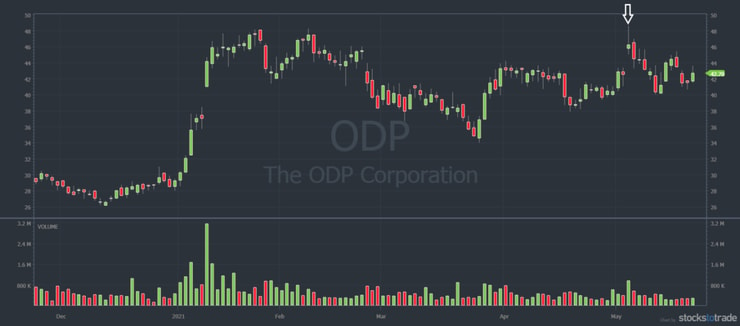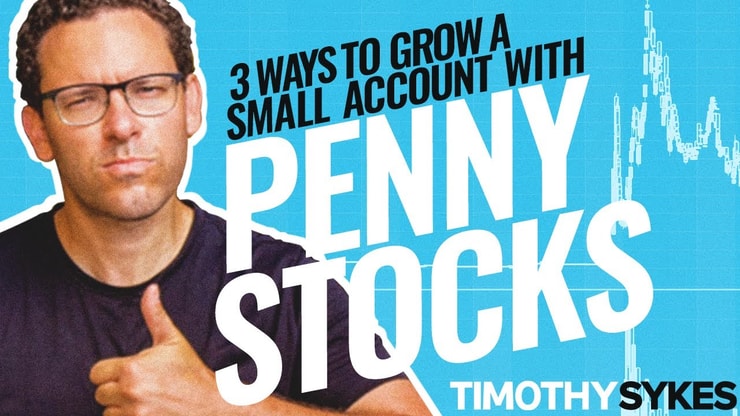The market typically reacts positively to stock buybacks.
But are they really as great as some investors think?
Buybacks became a hot topic in 2020 when large companies received federal bailouts. Many critics called for companies that received funds to be banned from using the money for stock buybacks.
So if buybacks are so great for investors and companies, why do some people think they should be banned or even made illegal?
Like everything in trading, it’s not an exact science.
So let’s dig into the details. Then you can decide for yourself whether stock buybacks are good or bad…
In this post, I’ll explain why a company would buy back its own shares and what it means for traders. Plus, we’ll look at some advantages and disadvantages of buybacks and their effect on the economy.
Let’s go!
Table of Contents
- 1 What Are Stock Buybacks?
- 2 Understanding How Stock Buybacks Work
- 3 Advantages of Stock Buybacks
- 4 Disadvantages of Stock Buybacks
- 5 3 Reasons Why a Company Would Buy Back Its Own Stock
- 6 What Companies Do Stock Buybacks?
- 7 What Are the Effects of Stock Buybacks on the Economy?
- 8 Is a Stock Buyback Good or Bad For Investors and Traders?
- 9 Should Stock Buybacks Be Illegal?
- 10 Frequently Asked Questions About Stock Buybacks
- 11 The Bottom Line on Stock Buybacks
What Are Stock Buybacks?

2025 Millionaire Media, LLCA buyback is also known as a share repurchase. It happens when a company buys back its own shares from the public float. It reduces the number of shares that are freely traded.
When there are fewer shares of a company, each share becomes worth a bigger percentage of the company. That can improve how the company looks on paper and can make it look appealing to investors.
Buybacks are a way for companies to return value to investors. They usually result in an increase in share price. And they can be done instead of paying a dividend or in addition to it.
That’s why you won’t see penny stock companies do stock buybacks very often. Penny stock companies don’t have the cash on hand to buy shares. And they don’t care about shareholder value like large-cap and blue-chip companies…
New to penny stocks? I’ve made over $7 million in my 20+ year career trading this niche.* Want to know how I did it?
Start your education with my free guide to trading penny stocks now.
Understanding How Stock Buybacks Work
A company’s board of directors must approve a share buyback.
There are also rules the company must follow when repurchasing shares from the market. (Actually, they’re more like guidelines. More on those later.)
A company can use retained earnings or debt to repurchase shares.
Once a company buys shares it can cancel them or keep them as treasury shares. If the company needs cash later, it can sell treasury shares back into the market.
But why would a company spend money on shares instead of on things like research, development of products, expansion, acquisitions, or even debt payments?
Unlike penny stocks, larger companies tend to have more cash to spend on share repurchases and growth. But that’s not always the case…
A company might announce a stock buyback program, but there’s nothing holding it accountable to follow through with the purchases.
So why do investors consider buyback announcements good news? And how does a company actually go about buying the shares from the float? Let’s dig in…
Types of Stock Buybacks
There are six ways a company can buy back shares. But I’ll focus on the two most common types…
The majority of stock buybacks happen through either the open market method or a fixed price tender offer.
Through the open market method, the company buys shares from the open market at market price.
In a tender offer, the company makes an offer to shareholders with a specific price they’re willing to pay per share. The offer will also include a timeframe for shareholders to accept. Tender offers are usually higher than the current market price to entice shareholders to sell.
Stock Buyback Rules
The SEC’s Rule 10B-18 outlines rules for stock buyback transactions. However, following the rules isn’t mandatory…
They’re considered more of a guideline of ‘best practices.’ But by following these four rules, a company can help reduce its liability when completing stock buybacks…
- The company can only work with one broker or dealer per day to complete transactions.
- Depending on the company’s float and trading volume, trading cannot be done in the last half hour of the trading day. Companies with a higher float and volume can trade up to the last 10 minutes.
- The repurchase price must be lower than the highest bid or last transaction price.
- Companies cannot purchase more than 25% of the average daily volume.
Once the company repurchases shares, it must disclose the details in its quarterly and annual reports.
The report must include the number of shares purchased and the average price paid per share. It must also report how many shares out of the approved amount it purchased and the maximum number it could purchase as part of the program.
More Breaking News
- Recursion Pharmaceuticals Faces Financial Headwinds Amid Strategic Changes
- MediaCo’s Latest Moves: Is An Upswing On The Horizon?
- Tesla Stock Moves: What’s Driving It?
Real-Life Example of a Stock Buyback
We’ve seen plenty of recent announcements of buybacks. It’s more common than you might think. Many companies paused buybacks during the uncertainty of 2020. But as the economy improves, many are resuming the programs and announcing new ones.
On May 5, 2021, The ODP Corporation (NASDAQ: ODP) announced the board of directors approved up to $300 million for stock buybacks.
You can read the full press release here.
Notice the announcement doesn’t specify how many shares the company will buy. It also doesn’t include when it will buy them or the price.
And remember, the company’s not obligated to go through with the purchases. It’s another reason buybacks can be sketchy. But you can see from the chart the stock reacted positively to the news. It had a huge gap up and traded high volume. However, it couldn’t hold its gains.

Now let’s look at some of the advantages and disadvantages of buybacks…
Advantages of Stock Buybacks

2025 Millionaire Media, LLCOne clear advantage is the reduction of outstanding shares. That means each share is worth a larger percentage of the company.
If earnings for the company remain the same, the lower float means the earnings per share (EPS) increases. It also improves the price-to-earnings ratio (P/E ratio). And that can make the company look more attractive to investors.
A lower float can also increase volatility. Especially when a stock trades high volume due to a catalyst. And that’s something day traders like me are interested in.
I love to take advantage of volatile penny stocks. The quick price moves mean I can be in and out of trades FAST. I can take the meat of the move and move on to the next trade.
And I’ve been teaching students how I do it for over 10 years in my Trading Challenge. Want to learn the same patterns, process, and mindset that have helped me and my top students become millionaires?* Apply to the Trading Challenge today.
Disadvantages of Stock Buybacks
The disadvantage is that the company uses its retained earnings to buy shares instead of spending them to grow the company.
And if they use debt for buybacks, that can be even worse. If the economy tanks, the company still has to come up with funds to pay its debts.
Another disadvantage is that companies tend to do buybacks in bull markets.
During economic booms, profits tend to be higher and shareholders expect a return on investment. But it can also be when stock prices are near their highs. That can mean the company overpays for shares.
3 Reasons Why a Company Would Buy Back Its Own Stock
Now let’s look at some reason why a company would spend money to buy its own stock…
While some buybacks happen during economic booms, they can also be done if a company thinks the market has undervalued its stock.
A stock buyback shows investors that the company believes its stock is worth more than the current market value. That can increase demand and push the price higher.
The company buying can also influence the price and drive it higher.
2. Improve the Company’s Financials
Stock buybacks can improve how a company looks on paper. I’ve already mentioned how the increased EPS makes a company look better to investors.
But spending cash hoards on stock can have other benefits. Spending cash reduces a company’s assets. That increases the company’s return on assets (ROA) ratio since it has fewer assets. And return on equity (ROE) also increases because there’s less equity. Investors consider that all good news.
Large profitable companies need something to spend profits on. Believe it or not, some may consider cash hoards a bad thing.
Shareholders want to see companies reinvest their profits in things like research, development, and expansion. But when large companies run out of areas to grow, they look for other ways to share profits with shareholders…
Stock buybacks or a dividend are a way to do that.
What Companies Do Stock Buybacks?
These are typically large-cap or blue-chip companies. They’re companies that have the extra cash to purchase shares and that care about creating shareholder value.
Penny stock companies aren’t likely to do a stock buyback. But just the announcement of a buyback can be a catalyst to create a trading opportunity.
Smart traders can take advantage of the news and hype, then move on. Just don’t hold and hope the company will actually follow through.
What Are the Effects of Stock Buybacks on the Economy?
There are arguments that stock buybacks can be both good and bad for the economy.
They can negatively affect the economy if it enters a recession. Especially if a company uses debt to purchase shares. If profits decline, debt increases the company’s risk of missing payments.
But spending cash on buybacks can put a strain on a company too. Especially if they buy back shares at the top of a bull market.
Without enough cash on hand, companies can struggle when times get tough. And the more businesses that struggle means less spending, possible layoffs, and more strain on the economy.
On the other hand, buybacks generally increase a stock’s price. And uptrending markets can increase investor and consumer confidence. Which can lead to more spending and economic growth.
Is a Stock Buyback Good or Bad For Investors and Traders?

2025 Millionaire Media, LLCThey’re generally considered good news for traders and investors.
Investors like them because it results in more value per share and a higher EPS. The company’s buying and news announcement can also increase demand and drive up prices.
Investors might also prefer buybacks over dividends for potential tax breaks.
Dividends are cash payments to shareholders. That means they’re taxed at regular income tax rates. And earnings from long-term investments are taxed at capital gains rates. Which are usually lower than income tax rates.**
Stock buybacks can also create opportunities for traders. A news catalyst that brings in volume can allow traders to take advantage of volatility.
Should Stock Buybacks Be Illegal?
Are stock buybacks illegal? No.
Should they be? Decide for yourself.
There are a lot of practices in the stock market that should be illegal. Stock buybacks aren’t even close to the shadiest thing that a company can do.
There are times when buybacks can benefit shareholders and the company.
But some market critics also consider them to be a legal way to manipulate a stock’s price. That’s why some call for stock buybacks to be banned or illegal.
You have to consider a company’s reasons for the buyback — its motivations, cash flow, and fundamentals.
Since I’m not an investor, I don’t care about any of that. I want to trade price action and hype. If a stock buyback announcement generates high volume and the potential for a trade, I’ll pay attention.
Frequently Asked Questions About Stock Buybacks
Learn even more about buybacks…
What's Wrong With Stock Buybacks?
Some investors and critics think it’s a bad use of funds when a company spends profits on a stock buyback. They can be especially bad if a company uses debt to purchase the shares. The lack of cash on hand or increased debt can put a strain on a company’s bottom line.
What’s the Difference Between Buybacks and Dividends?
Dividends are a cash payment to shareholders while stock buybacks create shareholder value by reducing the number of shares and increasing the earnings per share. That can also increase the stock price. Dividends are taxed at regular income tax rates, while increased value from buybacks is taxed at capital gains rates.
When companies buy back shares it reduces the number of shares in the float. That means each remaining share is worth a larger percentage of the company. It also increases the company’s earnings per share, which can make the stock look like a good investment and drive up the price.
Are Stock Buybacks Tax Deductible?
If a company uses debt for a buyback, the interest charges are tax deductible. For investors, the tax benefit is paying lower capital gains tax. That’s opposed to dividends that are taxed at income tax rates.
The Bottom Line on Stock Buybacks

2025 Millionaire Media, LLCWhether stock buybacks are considered good or bad depends on many factors. But in general, the market interprets buybacks as good news.
But since I don’t invest, I don’t care much about how a company looks on paper. Heck, most of the penny stocks I trade have no fundamentals…
And that doesn’t matter. My trading style takes advantage of volatility and quick price swings. Since a buyback reduces a stock’s float and increases volatility, it could create trading opportunities.
If you want to know how my students and I trade volatile penny stocks, apply for my Trading Challenge.
If you’re accepted you’ll get access to the same trading education resources as my millionaire students — thousands of archived webinars, video lessons, and access to all my DVDs, and the Challenge chat room. Plus, students get weekly live trading and Q&A webinars with me and the top Challenge traders.
If you’re dedicated to learning the process, apply today. See you in the chat room.
What do you think? Are stock buybacks good or bad? Let me know in the comments. I love to hear from you!















Leave a reply